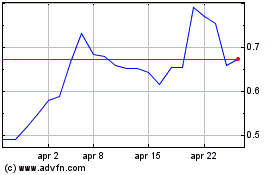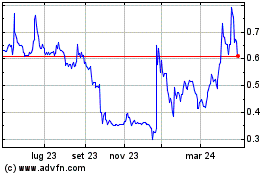- The Phase 2 trial for the treatment of NASH met its primary
efficacy endpoint; PXL065-treated patients achieved statistically
significant improvements in the relative decrease in liver fat
content measured by magnetic resonance imaging estimated proton
density fat fraction (MRI-PDFF) at 36-weeks for all doses.
- Key secondary measures in PXL065-treated patients included a
statistically significant improvement in Pro-C3, a biomarker of
fibrogenesis.
- PXL065 was observed to be safe and well tolerated with no
dose dependent increase in body weight and no increased lower
extremity edema vs. placebo. Safety profile is consistent with
reduced PPARg-mediated side effects vs. published results of
pioglitazone.
- Histology results pending in September, along with the
positive initial readout, will inform the next steps of PXL065 in
NASH, including the potential for Phase 3 development.
POXEL SA (Euronext : POXEL - FR0012432516), clinical stage
biopharmaceutical company developing innovative treatments for
chronic serious diseases with metabolic pathophysiology, including
non-alcoholic steatohepatitis (NASH) and rare metabolic disorders,
today announced positive top-line results for DESTINY-1
(Deuterium-stabilized R-pioglitazone [PXL065] Efficacy and Safety
Trial In NASH), the dose-ranging Phase 2 trial of PXL065 for the
treatment of NASH. PXL065 is a novel, proprietary
deuterium-stabilized R-stereoisomer of pioglitazone which has
reduced PPARγ activity but retains non-genomic
thiazolidinedione (TZD) actions.
“Pioglitazone has a good record of efficacy in NASH with 6
clinical trials in NASH patients to-date having demonstrated
substantial benefits on liver histology that compare favorably to
other oral molecules in development,” said Stephen Harrison, MD,
President, Summit Clinical Research. “DESTINY-1 was designed to
show that PXL065 could achieve a similar efficacy profile as
PPARγ targets, but with reduced adverse effects of
body weight increase and edema. As the principal investigator of
this important trial, I am pleased by the data we’ve seen so far
and am looking forward to reviewing the pending histology results
soon.”
“The data we’ve seen to-date support our hypothesis – that
deuterium modification of the pioglitazone R-enantiomer produces
differentiated pharmacology – by reducing PPARγ
activity and related adverse effects while retaining aspects of
pioglitazone-like efficacy,” said Pascale Fouqueray, MD, PhD,
Executive Vice President, Clinical Development and Regulatory
Affairs at Poxel. “Positive effects on liver fat content and a
well-recognized biomarker of fibrogenesis are reassuring. We are
excited to soon review the histology results from this study.”
“These Phase 2 results in NASH are an important milestone for
Poxel and add to our track record of executing successful clinical
trials. With the addition of the histology data from the DESTINY-1
trial, PXL065 could be advanced into a pivotal Phase 3 program for
NASH – representing a large unmet need and market opportunity,”
stated Thomas Kuhn, Chief Executive Officer of Poxel. “Today’s
results also validate the concept of the d-TZD platform, which
could be utilized in additional diseases such as ALD. We remain
fully committed to improve the health and well-being of patients
through the development of innovative treatments for serious
chronic metabolic diseases.”
Summary of Phase 2 NASH (DESTINY-1) PXL065 Study
Results
DESTINY-1 is a Phase 2, 36-week, randomized, dose-ranging,
double-blind, placebo-controlled, parallel group study designed to
assess the efficacy and safety of PXL065 in patients with
noncirrhotic biopsy-proven NASH across multiple clinical sites in
the US. The primary endpoint of the study measured the relative
change in the percentage of liver fat content based on magnetic
resonance imaging-estimated proton density fat fraction (MRI-PDFF).
The study also assessed the effects of PXL065 on liver histology
and other metabolic and non-metabolic biomarkers. Histology results
are expected in September.
Top-line results available at present include:
- 117 subjects were randomized to one of 4 daily (QD) treatment
arms (7.5 mg, 15 mg, 22.5 mg, placebo).
- The primary efficacy endpoint was achieved: a statistically
significant (p=0.024 to p=0.008) mean relative decrease vs. placebo
of 21% to 25% in liver fat content from baseline to 36 weeks was
observed at all PXL065 doses. 40% of patients who received PXL065
at the 22.5 mg dose achieved a >30% relative reduction in liver
fat content.
- Non-invasive biomarker results to-date included: dose-dependent
decreases in fibrogenesis markers Pro-C3 (significant vs. placebo
at the 22.5 mg dose; p=0.02) and enhanced liver fibrosis (ELF)
index. Trends in least-square mean ALT decreases up to 18.4 IU/L
vs. baseline were observed. However, this parameter did not reach
statistical significance. Further data analysis is ongoing.
- There was no dose dependent increase in body weight: a minimal
least-square mean increase of 0.68 kg was observed at the top dose
of 22.5 mg vs. placebo. The incidence of edema did not show an
observed treatment or dose relation when compared to placebo. With
respect to other safety measures, PXL065 was observed to be
generally safe and well tolerated; the number of patients
presenting with treatment-emergent serious adverse events (TESAEs)
were similar among all groups including placebo without dose
effect.
- As predicted, pharmacokinetic measurements showed
dose-proportional drug levels with the desired degree of higher
exposure to the pioglitazone R-stereoisomer and reduced exposure to
the (PPARg active) S-stereoisomer.
Additional data from histology results are expected in
September. The full Phase 2 results will be submitted for
presentation at an upcoming scientific meeting.
About PXL065
PXL065 is a novel, proprietary deuterium-stabilized
R-pioglitazone. Although pioglitazone is not approved by the FDA
for the treatment of NASH, it is the most extensively studied drug
for NASH and has demonstrated “resolution of NASH without worsening
of fibrosis” in a Phase 4 trial1. Pioglitazone is the only drug
recommended for biopsy-proven NASH patients by the Practice
Guidelines published by the American Association for the Study of
Liver Diseases (AASLD) and the European Association for the Study
of the Liver (EASL)2. Pioglitazone’s off-label use for NASH,
however, has been limited due to the PPARγ-related side effects,
which include weight gain, bone fractures and fluid retention.
Pioglitazone is a 1:1 mixture of two mirror-image compounds (R-
and S-stereoisomers) that interconvert in vivo. Using deuterium,
Poxel stabilized each stereoisomer and characterized their
different pharmacological properties. In in vitro studies, PXL065
has been shown to target non-genomic pathways including
mitochondrial pyruvate carrier (MPC) and acyl-CoA synthetase 4
(ACSL4). In preclinical animal models, PXL065 exhibits the
anti-inflammatory and NASH activity associated with pioglitazone
with little or no weight gain or fluid retention, side effects
which are associated with the S-stereoisomer3. NASH Phase 2
(DESTINY 1 trial) results available to-date show statistically
significant effects of PXL065 on liver fat content and a biomarker
of liver fibrogenesis. Relative to published data for pioglitazone,
reduced potential for weight gain and edema was also evident. Based
upon preclinical, Phase 1 and preliminary Phase 2 results to date,
Poxel believes that PXL065 may have a better therapeutic profile
than pioglitazone for NASH and may also have suitable properties
for further development in other indications including
adrenoleukodystrophy (ALD).
About NASH
Non-alcoholic steatohepatitis (NASH) is a metabolic disease with
no clear disease origin that is quickly becoming a worldwide
epidemic. It is characterized by the accumulation of fat in the
liver causing inflammation and fibrosis. The disease can be silent
for a long period of time, but once it accelerates, severe damage
and liver cirrhosis can occur, which can significantly impact liver
function or can even result in liver failure or liver cancer.
Typical risk factors for NASH include obesity, elevated levels of
blood lipids (such as cholesterol and triglycerides) and type 2
diabetes. Currently no curative or specific therapies are
available.
About Poxel SA
Poxel is a clinical stage biopharmaceutical company
developing innovative treatments for chronic serious diseases
with metabolic pathophysiology, including non-alcoholic
steatohepatitis (NASH) and rare disorders. Poxel has clinical
and earlier-stage programs from its adenosine
monophosphate-activated protein kinase (AMPK) activator and
deuterated TZD platforms targeting chronic and rare metabolic
diseases. For the treatment of NASH, PXL065
(deuterium-stabilized R-pioglitazone) met its primary endpoint in a
streamlined Phase 2 trial (DESTINY-1). PXL770, a
first-in-class direct AMPK activator, has successfully completed a
Phase 2a proof-of-concept trial for the treatment of NASH, which
met its objectives. For the rare inherited metabolic disorder,
adrenoleukodystrophy (ALD), the company intends to initiate Phase
2a proof of concept studies with PXL065 and PXL770 in patients with
adrenomyeloneuropathy (AMN). TWYMEEG® (Imeglimin), Poxel’s
first-in-class lead product that targets mitochondrial dysfunction,
is approved and marketed for the treatment of type 2 diabetes in
Japan. Poxel expects to receive from Sumitomo Pharma royalties and
sales-based payments. Poxel has a strategic partnership with
Sumitomo Pharma for Imeglimin in Japan, China, South Korea, Taiwan
and nine other Southeast Asian countries. The Company intends to
generate further growth through strategic partnerships and pipeline
development. Listed on Euronext Paris, Poxel is headquartered in
Lyon, France, and has subsidiaries in Boston, MA, and Tokyo,
Japan.
For more information, please visit: www.poxelpharma.com
All statements other than statements of historical fact included
in this press release about future events are subject to (i) change
without notice and (ii) factors beyond the Company’s control. These
statements may include, without limitation, any statements preceded
by, followed by or including words such as “target,” “believe,”
“expect,” “aim,” “intend,” “may,” “anticipate,” “estimate,” “plan,”
“project,” “will,” “can have,” “likely,” “should,” “would,” “could”
and other words and terms of similar meaning or the negative
thereof. Forward-looking statements are subject to inherent risks
and uncertainties beyond the Company’s control that could cause the
Company’s actual results or performance to be materially different
from the expected results or performance expressed or implied by
such forward-looking statements. The Company does not endorse or is
not otherwise responsible for the content of external hyperlinks
referred to in this press release.
1 Cusi, et al., Ann Intern Med. 2016, 165(5), 305-315). 2 J
Hepatol. 2016, 64(6),1388-402; Hepatology 2018, 67, 328-357. 3
Jacques et al. Deuterium‐Stabilized (R)‐Pioglitazone (PXL065) is
responsible for pioglitazone efficacy in NASH yet exhibits little
to no PPARγ activity
View source
version on businesswire.com: https://www.businesswire.com/news/home/20220829005747/en/
Investor relations / Media Aurélie Bozza Investor
Relations & Communication Senior Director
aurelie.bozza@poxelpharma.com +33 6 99 81 08 36
Elizabeth Woo Senior Vice President, Investor Relations &
Communication elizabeth.woo@poxelpharma.com
NewCap Emmanuel Huynh or Arthur Rouillé poxel@newcap.eu +33 1 44
71 94 94
Grafico Azioni Poxel (EU:POXEL)
Storico
Da Mar 2024 a Apr 2024

Grafico Azioni Poxel (EU:POXEL)
Storico
Da Apr 2023 a Apr 2024
